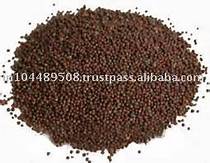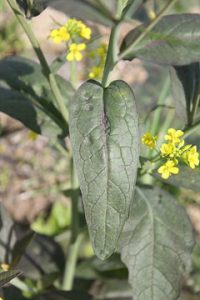Klasifikasi
Famili : Crucifereae (Brassicaceae)
Physical Characteristics
Brassica juncea is a ANNUAL growing to 0.8 m (2ft 7in) by 0.3 m (1ft).
It is hardy to zone (UK) 7 and is not frost tender. It is in flower from Jun to August, and the seeds ripen from Aug to September. The flowers are hermaphrodite (have both male and female organs) and are pollinated by Bees.The plant is self-fertile.
Suitable for: light (sandy), medium (loamy) and heavy (clay) soils and prefers well-drained soil. Suitable pH: acid, neutral and basic (alkaline) soils and can grow in very acid and very alkaline soils.
It can grow in semi-shade (light woodland) or no shade. It prefers moist soil.
Composition
Figures in grams (g) or miligrams (mg) per 100g of food.
Seed (Fresh weight)
- 0 Calories per 100g
- Water : 0%
- Protein: 0g; Fat: 30g; Carbohydrate: 0g; Fibre: 0g; Ash: 0g;
- Minerals – Calcium: 0mg; Phosphorus: 0mg; Iron: 0mg; Magnesium: 0mg; Sodium: 0mg; Potassium: 0mg; Zinc: 0mg;
- Vitamins – A: 0mg; Thiamine (B1): 0mg; Riboflavin (B2): 0mg; Niacin: 0mg; B6: 0mg; C: 0mg;
Medicinal Uses
Plants For A Future can not take any responsibility for any adverse effects from the use of plants. Always seek advice from a professional before using a plant medicinally.
Anodyne; Antibiotic; Aperient; Diuretic; Emetic; Galactogogue; Rubefacient; Stimulant.
Although not usually used medicinally, the seed is a warming stimulant herb with antibiotic effects[238]. Reported to be anodyne, aperitif, diuretic, emetic, rubefacient, and stimulant, Brown Mustard is a folk remedy for arthritis, foot ache, lumbago, and rheumatism[269]. The seed is used in the treatment of tumours in China[269]. In Korea, the seeds are used in the treatment of abscesses, colds, lumbago, rheumatism, and stomach disorders[269]. The root is used as a galactagogue in Africa[269]. Ingestion may impart a body odour repellent to mosquitoes[269]. Mustard oil is used in the treatment of skin eruptions and ulcers[269]. Believed to be aperient and tonic, the volatile oil is used as a counterirritant and stimulant[269]. In Java the plant is used as an antisyphilitic emmenagogue[269]. Leaves applied to the forehead are said to relieve headache[269]. The Chinese eat the leaves in soups for bladder, inflammation or haemorrhage[269].
Sumber : http://www.pfaf.org/user/Plant.aspx?LatinName=Brassica+juncea

